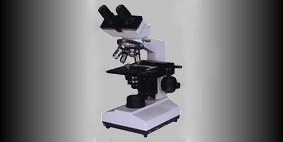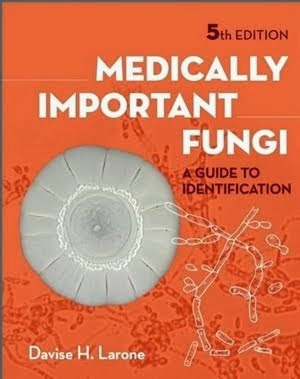A number of nasties can infect the female genital tract. The Previous post dealt with the parasite
. Other common infections are
infections, yeast infections and bacterial vaginosis. While
can be isolated from the vagina, a cervical swab is a superior specimen for detecting gonnococcus (G.C.) I'll do a post on
infection at a later date.
Bacterial vaginosis is characterized by a thin malodorous vaginal discharge due to an alteration of bacterial flora caused by a shift in the acidity (pH) of the vagina. It's referred to as a 'vagin
implies an inflamation which would be accompanied by a proliferation of white blood cells (wbc's). Here, in a bacteria vaginosis, the bacteria flourish without a significant increase in wbc's.
The bacteria mentioned above may be present in the normal vagina in small amounts. When whatever causes the conditions to change, these bacteria can overgrow the normal flora and therby cause vaginosis.
A guide for enumerating the proportion of the various bacteria forms present in a vaginal smear has been created and is known as the
.
By scoring the various bacterial forms and noting the presence of Clue Cells, one can standardize the criteria for determining if the patient does indeed have bacterial vaginosis.
While bacterial vaginosis is a genital, or perhaps a sexual disease, it is not considered a sexually transmitted disease. Sexual contact is not responsible for it's presence nor is it spread through sexual contact. It arises from changes within host allowing for the disproportionate proliferation of native bacterial species.

Normal vaginal fora
Gram stain showing a couple of epithelial cells and numerous gram positive lactobacilli (purple rods). Note too that there are few if any white blood cells.
(100X, Gram Stain, Nikon)
 Ditto
Ditto

Normal Vaginal Flora
All epithelial cells appear similar with no 'Clue Cells' which would appear bluish due to all the
Gardnerella vaginalis organisms adhering to the cells.
(100X, Gram Stain, Nikon)

Gram of bacterial vaginosis
Gram stain (1000X enlarged) showing epithelial cell coated with gram variable bacilli (Clue Cell).
Note gram variable bacilli (
Gardnerella vaginalis) , gram negative curved bacilli (
Mobiluncus sp.) & regular gram negative bacilli. Straight gram positive lactobacilli as seen in the previous photo are absent.
(1000X, Gram Stain, Nikon)
 08/10/11:
08/10/11: As an afterthought I added this photo which may better illustrate what is referred to as a 'Clue Cell' in vaginal swab gram stains. Here two epithelial cells are seen however the one on the left is 'coated' with gram variable bacilli (
Gardnerella vaginalis) making the cell appear purplish. On lower power scanning, these are usually seen with some frequency in a patient experiencing bacterial vaginosis.
(1000X, Gram Stain, Nikon)

A couple enlarged (1000X) gram stains of gram variable bacilli.
Small, short cells are gram variable -gram negative (pink), gram positive (blue) or both at once.

Gram Stain (1000X) of
Mobiluncus species (curtisii)
(Click on photo to enlarge for better viewing)
Mobiluncus species contribute to Bacterial vaginosis. They appear as gram negative (pink) curved bacilli - (look like pink parentheses)
Present are also two large pink epithelial cells
Added February 8th, 2016:
I see from the number of hits that this blog topic receives that it is quite popular. I thought I might add a few more photos to better illustrate the condition.
The next series of photos illustrate the condition of bacterial vaginosis where normal vaginal flora is greatly diminished and replaced primarily by Gardnerella vaginalis but possibly also Mobiluncus curtisii and other organisms such as the anaerobic gram negative Bacteroides or Prevotella species.
Bacterial vaginosis - usually appears as rather 'granular' (my personal description) as the entire field is usually stippled with the tiny gram-variable Gardnerella vaginalis. Compare this appearance to the normal vaginal flora which follows shortly below.
(1000X, Gram Stain, DMD-108)
Bacterial vaginosis - as above, a very 'granular' appearance throughout the field with epithelial cells and epithelial cells stippled with Gardnerella vaginals (Clue Cell).
(1000X, Gram Stain, DMD-108)
Bacterial vaginosis - distinctive granular appearance. Entire microscope field is often filled with these small gram-variable Gardnerella vaginalis usually appearing primarily purple-blue from the crystal violet in the gram stain. The Nugent score which assists in making a definitive decision on whether the flora present indicate bacterial vaginosis is really not necessary when the specimen looks as above.
(1000X, Gram Stain, DMD-108)
Bacterial vaginosis - epithelial cells with no distinctive clue cells in this photo, yet the field is filled with small gram-variable Gardnerella vaginalis.
(1000X, Gram Stain, DMD-108)
Bacterial vaginosis - one epithelial cell stippled (covered) with the small gram-variable Gardnerella vaginalis (clue cell) and one epithelial cell showing less coverage, equal to numbers you see throughout the field.
(1000X, Gram Stain, DMD-108)
Bacterial vaginosis - one last photo of bacterial vaginosis, primarily with the gram-variable Gardnerella vaginalis.
(1000X, Gram Stain, DMD-108)
Mobiluncus species - appear as small curved gram negative bacilli. They may be present in variable quantities in bacterial vaginosis.
(100X, Gram Stain, DMD-108)
Mobiluncus species - another view showing the rather small, curved gram-negative bacilli which may accompany Gardnerella vaginalis in bacterial vaginosis.
(1000X, Gram Stain, DMD-108)
Gram stains of normal vaginal fora and its consituents follow;
Lactobacilli - Lactobacillus species are the predominant flora found in the vagina and appear as gram postivie (purple-blue) rods. Lactic acid produced by these bacteria lowers the pH of the vagina and normal creates an environment which is not favorable to the growth of many other bacteria including Gardnerella vaginalis. When the natural occurring commensal flora changes, invading organisms can capitalize and displace and invade.
(100X, Gram Stain, DMD-108)
Lactobacillus species - another view as above. These should constituent the primary flora of the human vagina.
(1000X, Gram Stain, DMD-108)
Appearance of normal vaginal flora - Here we see an single epithelial cell in the center of the photo and numerous larger gram positive bacilli (rods). The appearance of this photo is distinctly different from the previous bacterial vaginosis examples. The overall appearance is not so 'granular' as the tiny Garnerella vaginalis is not present, or at least present in any appreciable quantities. While white blood cells may be seen, they are not present in large quantities (pus) which differentiates 'vaginitis' from 'vaginosis'.
(1000X, Gram Stain, DMD-108)
Appearance of normal vaginal flora
(1000X, Gram Stain, DMD-108)
Appearance of normal vaginal flora - lactobacilli, epithelial cells and occasional white blood cells.
(1000X, Gram Stain, DMD-108)
Appearance of normal vaginal flora - lactobacilli accumulated around an epithelial cell, not to be confused with 'clue cells'.
(1000X, Gram Stain, DMD-108)
Appearance of normal vaginal flora -numerous epithelial cells with lactobacilli distributed throughout the microscopic field. No WBC's seen in this photo.
(1000X, Gram Stain, DMD-108)
Appearance of normal vaginal flora - numerous epithelial cells, occasional wbc's and the comparably (to G.vaginalis) larger gram positive lactobacilli throughout the field.
(400X, Gram Stain, DMD-108)
Bacterial vaginosis (left) and typical normal vaginal gram stain (right)
For direct comparison
(Both 1000X, Gram Stain)
* * *

Just for comparison: Vaginal Gram Stain of Yeast Infection (1000X)
Note: epithelial cells with yeast cells (purple) and yeast pseudohyphae (long purple thread-like structure).

 Schistosoma mansoni wallpaper (1024 X 768)
Schistosoma mansoni wallpaper (1024 X 768) Schistosoma haematobium
Schistosoma haematobium Schistosoma haematobium (X400)
Schistosoma haematobium (X400)































.jpg)























